Tiger’s Nest and My Last Day in Bhutan
My final day in Bhutan featured a journey to the location most emblematic of this demure country — Taktshang Goemba, or Tiger’s Nest Monastery. Mention Bhutan in conversation and Tiger’s Nest is the image that comes to mind for most people. Its anomalous, cliff-side location distinguishes it among the world’s many monasteries and religious sites. A trip to Bhutan would be incomplete without seeing it, for the pride of this small nation reaches its heights and waves proudly with its prayer flags.
In the 8th century Guru Rinpoche, founder of Mahayana Buddhism, flew on the back of a tigress from Tibet to the cliff in Bhutan where Tiger’s Nest is located (hence the name). He slayed a demon and meditated in a cave for several months. Guru Rinpoche transformed into eight manifestations, or gurus, each with a specific purpose. Regarded as the second Buddha, Guru Rinpoche remains an important figure in Buddhism in Bhutan.
Many hundreds of years after Guru Rinpoche arrived in Bhutan, the 4th Druk Desi (civil administrator) Tenzin Rabgye became a key figure of the Drukpa (Bhutanese) state. Also known as Gyalse or “Prince” Tenzin Rabgye, he introduced Bhutan to the festival dances of Tshechu and its massive wall hangings called Thongdrol. Both remain important facets of today’s Bhutanese culture. Upon visiting the cliff-side cave where Guru Rinpoche had meditated in the 8th century, Gyalse Tenzin Rabgye declared that a monastery should be built in his honor. Thus, the creation of Tiger’s Nest in 1692.
We left the hotel at 7:00 a.m. and made a short drive through Paro, into the hills, to the base of the mountain. Horses and guides waited to carry passengers to the top, but we went by foot. Tiger’s Nest was visible at the start — like a brush stroke of white on a gray granite cliff, to the right of a small couloir.
The morning was pleasantly cool — perfect for hiking. The terrain felt like home, with pine trees and brush and a well-worn trail that moved quickly from a flat introduction to a steep first act. Within ten minutes I was removing layers in a familiar habit from countless days spent hiking in California and Colorado. Now living in Singapore, it was SO good to be back on a real mountain trail.
Switchbacks snaked left and right and gradually lifted us up the mountain where we paused for a photo and wondered if we were really getting any closer. We could see Tiger’s Nest again, this time high on the mountain in front of us as we passed a long line of prayer wheels on a flat stretch of dirt.
About one hour into the journey, we reached the halfway point marked by a quaint cafe with an outdoor terrace and a good vantage point of Tiger’s Nest. With little traffic on the trail, we decided to keep going and stay ahead of other tourists making the same trip. But let’s be honest — there aren’t many tourists in Bhutan, so feeling crowded on the trail wasn’t really a huge concern.
The trail went up and up again for another 45 minutes, finally flattening out along the side of the mountain. We had reached the highest point, now hiking straight ahead until we reached the mountain edge where the trail emerged from the trees revealing an eye-level view of Tiger’s Nest.
To the right and below, the trail dropped steeply and finished its delivery but the view of Paro, prayer flags and Tiger’s Nest across the gorge held me captive for several minutes. It was the view I had seen in so many photographs. Even standing in front of it with my own eyes I had to remind myself: I AM HERE. I AM AT TIGER’S NEST IN BHUTAN. Take it in. Look at the details. This is NOT a postcard. This is happening! And nothing is happening! It’s perfect — just sitting there for me to see, at this moment, in this life.
We followed the stone steps, descending along the mountainside as the trail zigged and zagged. Tiger’s Nest loomed above us across the gorge as countless strings of prayer flags shifted in a colorful dance around us. We crossed the footbridge at the deepest point of the gorge where a white ribbon of water rushed down the granite face from above. We started climbing up again as I turned to look at the trail behind us.
A final flight of stairs led through the entrance to Tiger’s Nest — double wood doors in a small stone wall with tin shed roofs. I was surprised that we would actually be able to enter the monastery, but that’s the rare beauty of a small country like this with the space and kindness to accommodate the curiosity of travelers like me. We arrived at the guard house where we were required to check our bags and cameras, leaving the interior journey to my description and your imagination.
As you would assume based on the unusual shape and location of Tiger’s Nest, its inner chambers are stacked and wedged into the mountain with connecting steps and staircases. We removed our shoes and entered the first room — an intimate cave that fit just a few people, with a low ceiling and a small Buddha statue. Warm, quiet, insulated. It is said that Guru Rinpoche meditated here for several months, and there is a gilded doorway (seldom opened) to another cave beyond.
Back outside, we climbed a ladder-like staircase to the next level. The second chamber was comparatively large, with bigger statues, a high ceiling and a trap door that revealed a cave connecting to the first chamber below. Mysterious, cold, cryptic. Each wall was painted and decorated with endless detail.
The third chamber was mid-sized and we were the only people inside. Familiar, approachable, positive. Kinga explained to us that if we had come to Tiger’s Nest to get a name for a child this is where it would happen.
“I want a name,” I said.
“You want a name?” Kinga replied, looking at me curiously.
“Yes, I’d like a name. Can I have a name?” What a once-in-a-lifetime opportunity to partake in a Bhutanese tradition! Clearly there was no better place in the world.
Surprised by my request, Kinga scurried out the door to find the monk who would possibly fulfill my request. Upon their return there was a brief bit of Bhutanese negotiation, then Kinga told me to make a wish — boy or girl. The monk reached for a small glass jar filled with dozens of rolled strips of paper. He removed the top and offered the open jar to me, from which I picked a piece of paper. He unrolled it and wrote it down. I now had a name — two names actually, as is the Bhutanese custom. My name (which I will keep to myself) loosely translates to “Perfect Happiness” and yes, I was perfectly happy.
Our final destination was another mid-size chamber packed with statues, paintings, figurines, butter lamps, offerings and explosive color throughout. Grand, overwhelming, divine. A massive Buddha statue dominated the room, filled with natural light from a window on the south side. Again, I was astonished at merely being inside the monastery but viewing each chamber had been a personal experience that provoked a wide range of thoughts and feelings.
We stepped outside, put on our shoes and lingered at an overlook that faced the Paro Valley several thousand feet below… just the warm sun, cyan sky and pleasant breeze accompanied us in reverence.
We departed the monastery and meandered down the steps, across the gorge and back up the other side. I think I shot a hundred photos — zoomed in, zoomed out, horizontal, vertical, snap, snap, snap, you may never be here again. The remaining trip to the bottom was far less arduous, filled new memories of a very special place. We stopped for a quick lunch at the cafe (good food) and then continued down the hill.
Back at the car we departed for the remaining two sites of our trip. We traveled a road leading up a hillside, past an archery competition, to another area of Paro. The National Museum overlooked the valley from a fantastic perch on the hill.
Damaged by an earthquake, the National Museum looks like it might collapse at any moment with large visible cracks and a portion of its wall reconstructed with unpainted stone. It has a circular shape like a conch shell with a wall several feet thick. The artifacts of the museum have been transferred to a more secure building across the driveway. The exhibits include an incredible room of Bhutanese masks, as well as tapestries, tools, weapons and clothing from the past several centuries.
Our final stop was a very old stupa in the Paro Valley — Kichu Lhakhang, built in the 7th century. It was modest and soft spoken, with a homier feel than its grander counterpart up the mountain. A couple of sleepy cats guarded the inner courtyard where a beautiful door led to the prayer hall. Its dark, worn interior breathed heavily with age and wisdom.
The exterior was perforated by a long line of prayer wheels and two kids kicked a ball as butter lamps flickered inside a small shed. It was a perfect scene to end the trip — life, peace, devotion and beauty in a country overflowing with the same.
A Few Tips About Booking a Trip
Do your research (thanks KB!), understand what you’re paying for and consider booking with a local Bhutanese company like Bridge To Bhutan. (They are wonderful, by the way. Hi Fin! Hi Lotay!) Bhutan levies a tourism fee of $250 USD per person, per day. If you’re a single traveler, you will pay an additional $40 USD per day. (These totals may fluctuate slightly depending on what time of year you visit.) The government uses a portion of this fee to provide free health care and education for the Bhutanese people so your money is going to a great cause. The remainder of this fee goes to the local tour company who pays for your guide, your driver, your hotel room and your food (minus drinks and alcohol, airfare not included). So, all in on the ground for less than $300 per day? A pretty good deal.
Compare that total with some non-Bhutanese tour companies around the world who are charging between $4,000 and $7,000 USD for a single traveler on a week-long itinerary (airfare not included), which is $500 – $1,000 per day. This is a massive difference in price. Perhaps these companies would claim their guides, accommodations and/or services are premiere or luxury, but for me Bhutan wasn’t a destination I needed to experience at a luxury level. Nonetheless, the “standard” places we stayed at were great — clean, modern, even charming (Meri Puensum Resort), and our guide and driver were smart, well spoken, friendly and fun to get to know.
Bhutan is notorious as an expensive, out-of-reach, exorbitant destination… and wrongfully so, in my opinion. Choose wisely, do the revised math and put Bhutan back on your list. I think I hear the sound of one hand clapping.

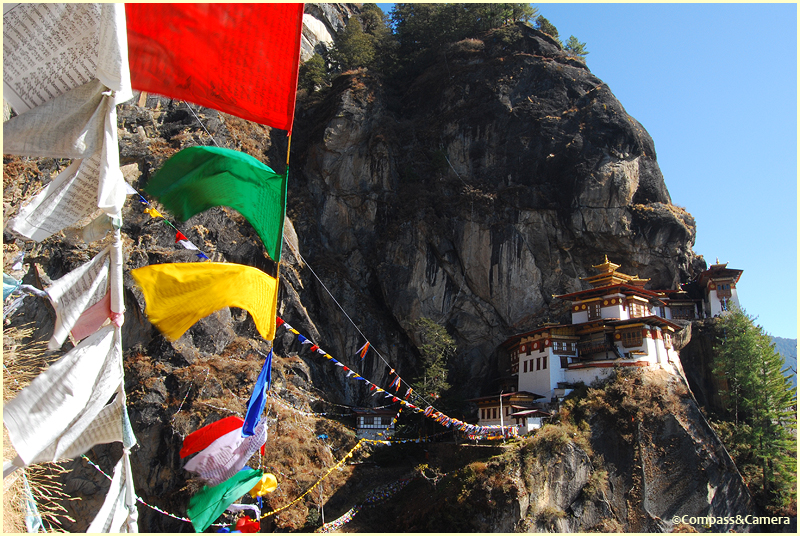



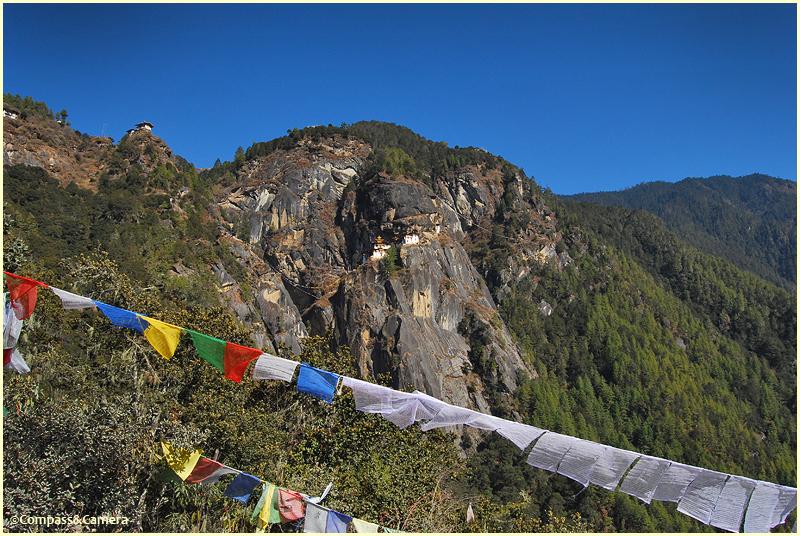
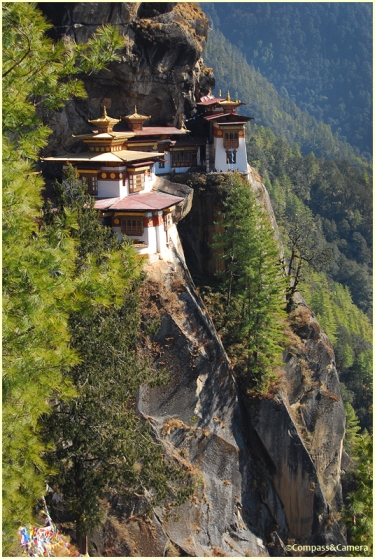

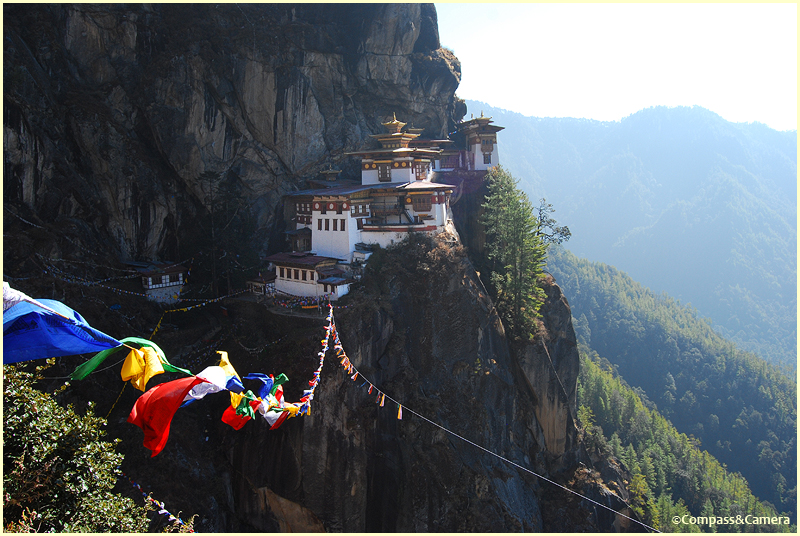
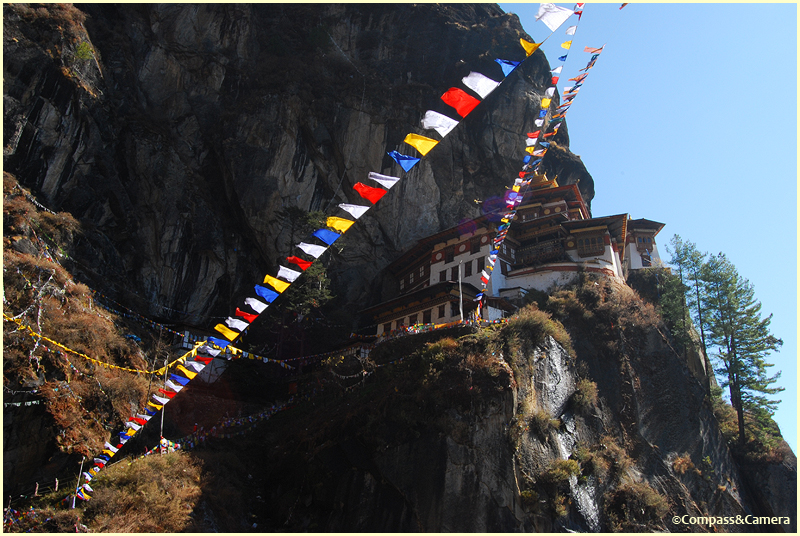
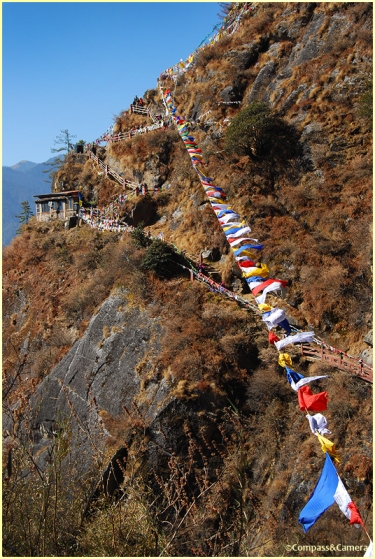

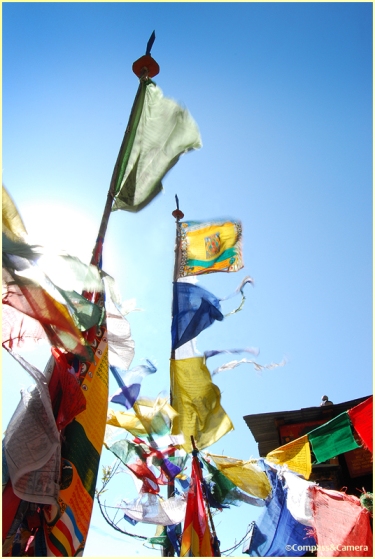

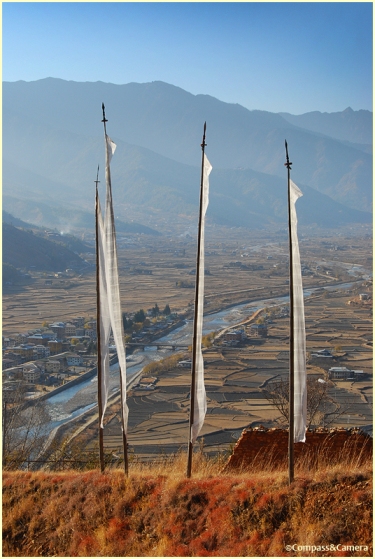
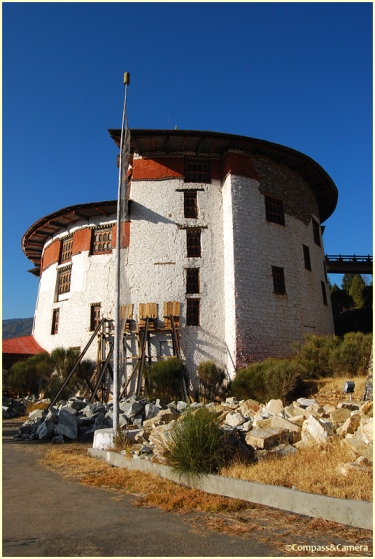
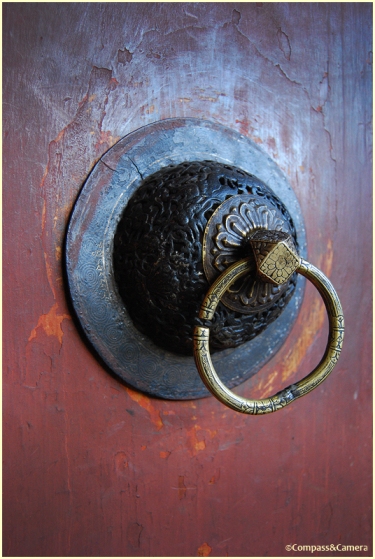

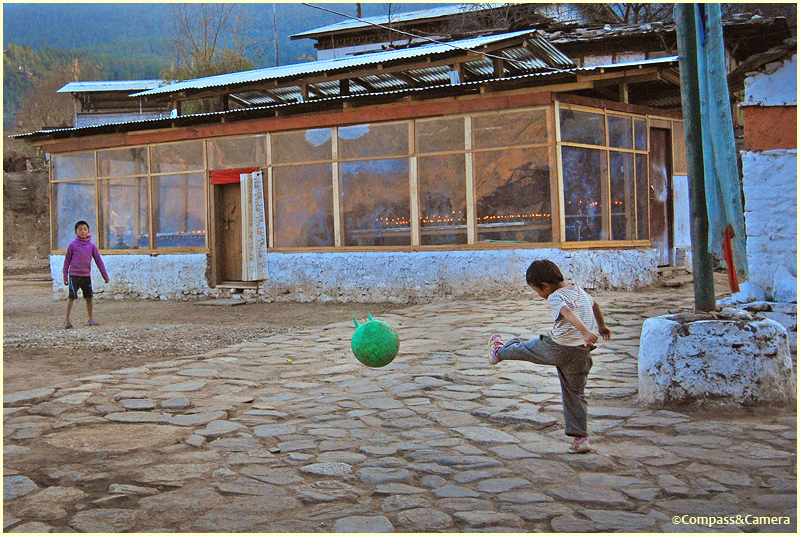
Have wanted to go to Bhutan for many years. Tears filled my eyes as I read your blog. What a joyous adventure!
LikeLike
Oh, wow, that’s such a nice message. Thank you, even though I made you cry. 🙂 Hope you get there someday! Thanks for reading. K.
LikeLike
Hi It was very good to read your post and see the pictures. We have also traveled to Bhutan and to some offbeat locations in Bhutan too… Its a beautiful place…
LikeLike
Hello! Thank you! Yes, Bhutan is a very special place. I just visited (and followed) your blog! So great to connect, and your photos are stunning. I’m hoping to go to India next year, so I can’t wait to read more about your travels. Thanks for your comment!
LikeLike
Thank you so much! Do let us know about your India plan… While we are a tad slow in uploading a lot of the travel information we already have, we could nevertheless give you tremendous insights into off the beaten track destinations that will make your India travel ever more fun!
LikeLike
Oh, very good! I’ll definitely let you know! Thank you so much! 🙂
LikeLike
Thank you….
LikeLike
Thanks for your wonderful blog. I waited rather impatiently for each new installment! And then read eagerly when they came. What did you think of the tourists who rode horses half way up to the Tigers Nest? Definitely the most interesting place I’ve been to.
LikeLike
Thank you John! I know, seems like it took me forever to write each installment! Thanks for your patience! It’s time consuming (but fun) to verify everything, condense history into a couple paragraphs and make sure it’s all accurate. The horses were okay, but going by foot is always my preference. It makes getting there very rewarding. What did you think? Thanks so much for reading! K.
LikeLike
I agree about going by foot. The horse riders were missing the point.
LikeLike
I’ll never get to Bhutan, so appreciatye the opportunity to see it through your eyes. Thank you – making a deep bow to you.
LikeLike
You made it to Tiger’s Nest! It is a truly wonderful and yes iconic place. I am glad to hear I am not the only person who had a ”oh my I really am at the Tiger’s Nest” reaction! What a shame about damage to the National Museum: that was a great little building. Hope they can fix it! Thanks for sharing your trip….it brought back some great memories:-)
LikeLike
Thank you so much! Great to hear you’ve been to Bhutan too.Thanks for reading, and safe travels to wherever you go next!
LikeLike
Amazing photos and descriptions K. That photo of th eye level view of Tiger’s nest is beautiful.
Perfect Happiness…yes, that’s just right.
LikeLike
A brilliant series all round with marvelous images. Love the football shot 🙂 And thank you for the tips.
LikeLike
Thank you, Madhu! Namaste
LikeLike
What a very special and magical moment that must have been up there on the mountain. I hope you fulfill your wish- boy or girl- and let us know the outcome.
LikeLike
Pingback: Day Five in Bhutan: Punakha to Paro | Compass & Camera
So good to read the details on Bhutan and the beautiful pictures you have posted…
LikeLike
Thanks again!
LikeLike
Kelly Girl….The name from the jar at Tiger’s Nest brought tears to my eyes. It was “Perfect Happiness” for this guy in the foothills. Hopefully someday…Love, POP
LikeLike
Ah, thanks POP! It was a great moment, a great memory, maybe something to keep for the future. You never know! Thanks for reading. Love you, K.
LikeLike
Your images are fantastic in this post, and the writing is well done also. Your blog is very well done, a diamond in all the fluff. Great job. Alex
LikeLike
Thank you again! It’s hard to take a bad photo in Bhutan. It’s so beautiful! Happy you enjoyed the writing, too. That means a lot. 🙂
LikeLike
Oops, well done two times in a row. Well, that just means I like your work! 😉
LikeLike
🙂
LikeLike
Dang, woman. You write REALLY well! I’d mention your photos, too, but I’m thinking it may be impossible to take a bad photo in Bhutan? Truly impressed. Can I get to Tiger’s Nest in the rain in June? Do I need to know anything else? Where are you now?
LikeLike
Hello again! Thank you so much for the compliment! Yeah, hard to take a bad photo in Bhutan. If you go, make sure you see an archery contest — it’s the national pastime, and I think they happen pretty frequently. We came upon one on a weekday afternoon. A bunch of guys shooting arrows having a blast. Really fun to see. I’m in Singapore now — busy with work so I haven’t posted much, but hopefully my last post on Oman coming up in a few days. And then… lots more travel starting in June. Can’t wait! Where are you?
LikeLiked by 1 person
Cool. Archery it is. I’m in Abu Dhabi. Where do you head first?
LikeLike
Love the blog We are planning a trip to Bhutan. I take it you’d recommend Bridge to Bhutan? What were your fav parts?
LikeLike
Thank you, Jan!! I would absolutely recommend Bridge to Bhutan! Finn and Lotay are such great guys. So professional, so knowledgeable. I have so many favorite parts… where to start? Loved the walk through Punakha Valley, watching them take down the flag at the end of the day at the dzong in Thimphu, watching an archery contest (make sure you do this — they happen frequently), Tiger’s Nest of course, seeing the Buddha Dordenma (just completed in the last few days — should be great to see it now), and a little shopping at an outdoor row of stalls in Paro. There were so many highlights, as well as a lot of driving on really bad roads, but it is unlike anywhere else. Let me know if you have any other questions. Happy to help! 🙂
LikeLike
I just returned from Paro and the museum is still closed. I would like to go back and travel south next time. I stayed at the Gangley Palace and loved it. The view at night from the dining room was wonderful. The museum and monastery are both lighted until about 8ish at night. This was one of the best places I have ever visited. Thanks for sharing your experiences. Do you happen to remember what the small stone collections along the path up to Tiger’s Nest were called?
LikeLike
Hi Suzanne! Great to hear that you enjoyed Bhutan so much! It’s such an amazing country. Unfortunately, I don’t know what the stone collections are called. Maybe I’ll have to go back! 🙂 Thanks for your comment, and safe travels wherever you go next!
LikeLike
I found out what it is called. It’s called Tshetsa ( mini stupa). Thanks for responding.
LikeLiked by 1 person
Pingback: The Ascent to Tiger’s Nest | What an Amazing World!
Gorgeous photographs. You entice me to Bhutan with your photos and words, especially with doing the math re cost. It looks like you got a perfect day for the hike to the Tiger’s Nest.
Alison
LikeLike
I’ve just gone back and read all of your Bhutan posts in preparation for my trip in April! You saved the best set of sentences for this last entry: “I AM HERE. I AM AT TIGER’S NEST IN BHUTAN. Take it in. Look at the details. This is NOT a postcard. This is happening! And nothing is happening! It’s perfect — just sitting there for me to see, at this moment, in this life.”
This is what I can’t wait to feel and say. I’ve waited so long to get to Bhutan and, like Tibet was for me, it is bound to be very, very special. Your posts brought so many little pleasures: the monks, the mandalas, the children, the animals, the fields and paths and streams, the chilies, that lunch plate that I want to gobble up right now! I’m certain I will go back and re-read your posts for more details as April approaches, but I’m already feeling the glow of excitement that you expanded for me with your writing!
LikeLike
THANKS, Lex!! 🙂 I love it when my past posts are inspiring for experienced travelers like you!!! That means so much to me. I’m SO excited you’re going!!! For how long? And with which company? I’m sure you’ll have a similar visceral feeling of disbelief as you stand and look at Tiger’s Nest — such a sought-after destination for so many people. The whole country just offers a different perspective on life, sustainability, generosity, happiness. They dance to their own drum and we can learn a lot from their choices and way of life. I can’t wait to experience Bhutan again through your thoughts and views! Thanks for your lovely comment.
LikeLike